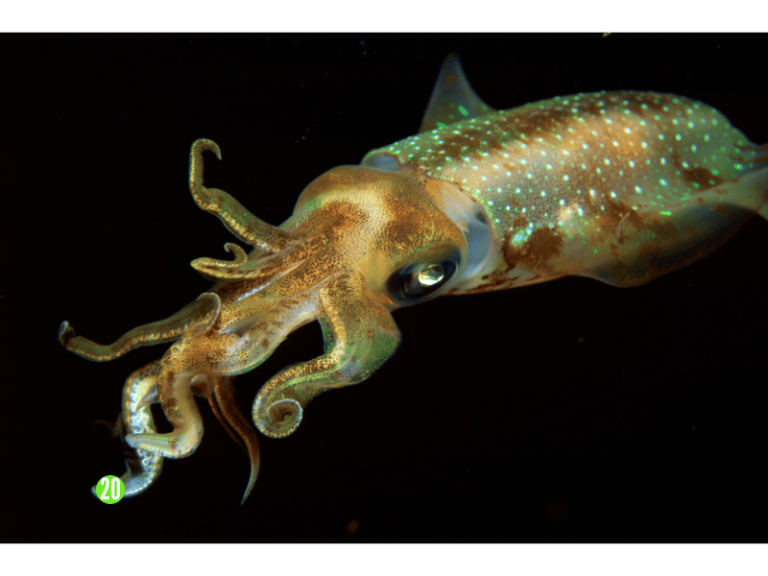Squids have a “ink sac” inside their bodies, filled with ink. When we cut them open with a knife, the ink flows out, staining everything in deep black. This is why many people refer to them as inkfish. Historically, people used squid ink to dye clothes, paint blackboards, and even as ink for writing!
The ink inside a squid’s belly serves as a defense mechanism: normally, squids float on the sea surface like small boats. However, if a fierce predator attacks, the squid immediately shoots a jet of ink from its ink sac, darkening the surrounding seawater. Within this cloud of black ink, the squid escapes from danger. Moreover, this ink contains toxins that can paralyze enemies. However, because it takes considerable time for the ink sac to accumulate a full load of ink, squids are reluctant to release ink unless in extreme peril.
Ancient Chinese texts describe how “when this fish encounters a fishing boat, it spits ink to dye the water black, confusing the nets and signaling a great catch.” This illustrates that the Chinese people have long understood the squid’s habit of ejecting ink.
Squids prefer deep-sea excursions; it is only toward late spring that they gather nearshore to spawn. They lay their eggs on wooden pieces or seaweed, resembling clusters of grapes. Along the coast of Zhejiang, fishermen often bundle tree branches and toss them into the sea to attract squids for spawning. When large groups of squids arrive, fishermen cast nets to capture thousands or even tens of thousands at once.

